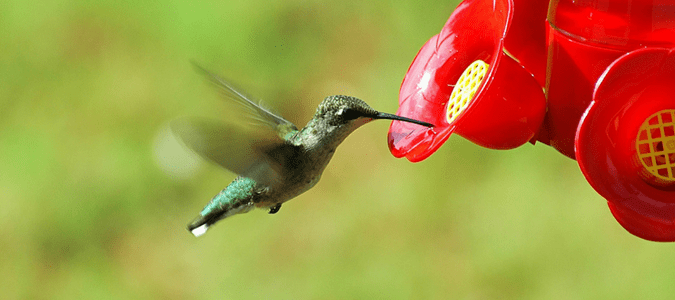
You are sitting on your porch, reading a book, when a hummingbird pays you a visit. The impossibly tiny bird flits from flower to flower. Then it hovers. Its wings are a blur of frantic activity while the head barely moves. After a moment, it’s gone, zipping off in search of greener pastures.
The experience is a bit of everyday magic, leaving you with a happy, contented feeling. I wish they’d come by more often, you think.
Seeing hummingbirds in your yard isn’t an everyday occurrence, but you can make hummingbird season in Texas a magical time with just a little preparation. You can do several things to attract hummingbirds and encourage them to stop by more frequently.
It starts with knowing which hummingbirds can be found in Texas–and when.
What You’ll Learn:
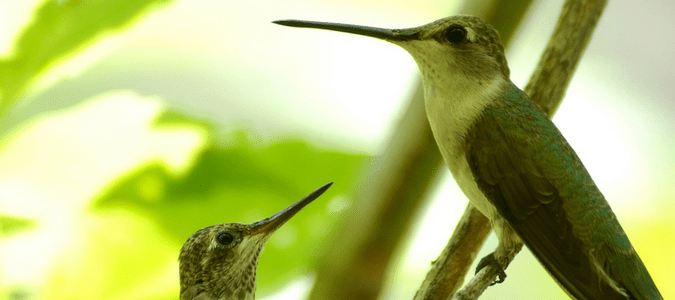
Types Of Hummingbirds In Texas
Believe it or not, Texas hummingbirds are a small portion of the world’s 300 different species of hummingbirds. Here are some of the most common types in the Lone Star state:
Allen’s
Watch for bronze spots on this species’ throats and an overall color pattern of green and coppery-orange. Adult males also have an “eye patch.”
Anna’s
Defining characteristics of this type of hummingbird include a red “crown” on the head and a dark bill.
Black-Chinned
As the name implies, this bird sports a black chin with a purple band beneath it.
Blue-Throated
Green on top, gray on the bottom, this hummingbird has a white-striped face. The blue throat of the name is only present in adult males.
Broad-Billed
Look for the red-orange bill and a blue-green chin and throat if you are trying to identify this hummingbird species.
Broad-Tailed
Hear that buzzing? It might be from this broad-tailed hummingbird, which has a broad tail instead of forked.
Buff-Bellied
Look closely, and you’ll notice a red bill with a dark tip and green coloring on the top half of the body of this variety of hummingbird. These markings, in addition to its “cinnamon buff-belly”, make the bird distinct.
Calliope
The easiest way to tell if you’re looking at a calliope hummingbird is to look at the throat. Males boast bright magenta coloring on that part of the bird’s body that really stands out.
Lucifer
Male lucifer hummingbirds have a dark throat unless the light hits it, which turns a brilliant (and very noticeable) purple.
Magnificent
Now more commonly known as Rivoli’s hummingbird, you can tell males of this type by the black belly, green throat, and purple crown. The white streak behind their eyes can identify females.
Ruby-Throated
Once again, the males of the ruby-throated hummingbird variety are most noticeable due to the contrast between their green heads and backs and the iridescent ruby color of their necks when it hits the light.
Rufous
This type of hummingbird is recognized by its dark bill and red-brown back.
White-Eared
Listen to their “metallic chipping song” to identify this hummingbird species. Then look for dark faces with long white stripes behind the eyes.
The green-breasted mango, green violet-ear, Costa’s, and berylline hummingbirds have also been spotted in Texas, but only very rarely.
However, which time of year is best for you to see hummingbirds will depend on where you live in Texas. Various species migrate through different parts of our state at different points in the year.
Those winter-dwellers we mentioned? That only applies to coastal Texans. In contrast, people living in and around Houston, Austin and Central Texas Hill Country typically begin seeing hummingbirds appear by the middle of March until May during the spring migration. The fall migration lasts from about August until October. By early November, the last hummingbirds are usually gone for the year.
So, unless you live in a coastal region of Texas, hummingbirds should start arriving in your area between March and May and may leave between late-July and early November.
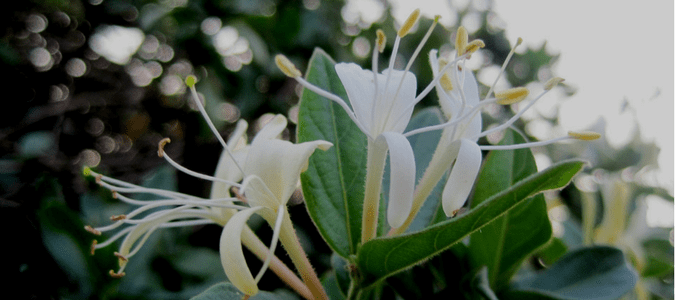
What Flowers Attract Hummingbirds?
It’s not just the climate that encourages hummingbirds in Texas to hang around–we also have a variety of flowering plants they love that you can incorporate into your landscaping. No matter what look you want for your lawn, you have a wide selection of plants that attract hummingbirds. Some favorites include:
Turk’s Cap
These much-loved native Texas plants possess stunning vermillion-red flowers, grow well on the coastal plain, and are drought-tolerant west through Midland.
Morning Glory
From white to pink to lighter purples, Texas has a number of varieties of morning glories throughout the state.
Silver-Leaf Sunflower
Not only will you attract hummingbirds with this bright yellow sunflower, but also butterflies.
Coral Vine
Also known as Queen’s Wreath, this plant is a fantastic addition to a wall or trellis that will produce flowers that range from pink to white and bring hummingbirds, butterflies, and bees to your yard. Beware, though–it can spread very quickly.
Esperanza
Both hummingbirds and bees will be drawn to these striking, tubular yellow flowers.
Yellow Alder
Hummingbirds love these small, yellow perennials.
Trumpet Vine
With its orange-red blossoms and tendency to attract hummingbirds, trumpet vines have become fairly popular. However, take care where you plant them because they can be pretty aggressive.
Honeysuckles
Coral, trumpet, evergreen, scarlet–there are many kinds of native honeysuckles you can plant to draw hummingbirds to your yard. Take your pick!
Coral Bean
The scarlet flowers of the coral bean can add a bright wave of color to your garden, and hummingbirds will flock to them.
Hibiscus
Choose Texas Star hibiscus, and you’ll enjoy a parade of hummingbirds and butterflies all summer.
Other flowers Texans may want to consider adding to their landscapes due to their appetizing nectar include:
- Azaleas
- Beauty bush
- Bee balm
- Bergamot
- Butterfly bush
- Cardinal flower
- Columbine
- Coral bells
- Foxglove
- Horse chestnut
- Larkspur
- Mimosa tree
- Nasturtium
- Pea tree
- Scarlet sage
- Scarlet salvia
- Snapdragon
- Tiger lilies
- Weigela
Of course, not everyone has a green thumb. What other ways are there to attract hummingbirds that don’t involve keeping a plant alive?
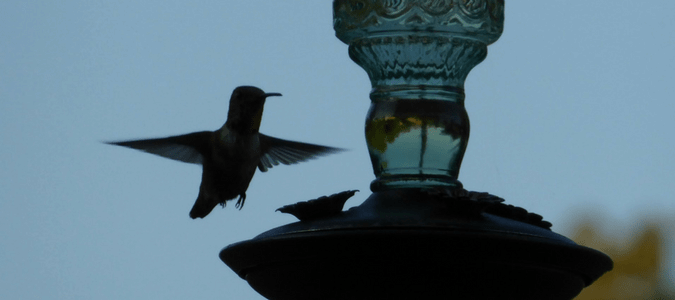
How To Attract Hummingbirds
Feeders are one of the best ways to get hummingbirds to see your yard as a friendly place, but they do take a bit of planning and maintenance. Getting the nectar mixture right is vital, or you can harm the birds, for example. Also, you must clean them regularly to ensure mold doesn’t grow.
Some questions you’ll need to answer if you decide to add a feeder to your yard include:
Will you opt for a commercial feeder that may be more visible and attractive to the birds, or stick to a simple dish that can be easily tossed into your dishwasher and cleaned?
Do you want to buy premixed nectar or use a recipe to make your own?
Will you have one feeder or several?
Where will you place the feeders in your yard?
This last question is perhaps the most important and even ties into some others: where is the best place to put your feeder or feeders?
It’s not a simple or easy question because some factors will be specific to your geographic location and yard. In general, here are a few guidelines for hummingbird feeder placement.
The location should be easily seen… yet private. While it’s true that hummingbirds tend to have fantastic eyesight, they will have a more challenging time noticing your feeder if hang it behind dense foliage or otherwise tuck it away.
However, you also want to ensure the feeder is positioned so it gives hummingbirds a bit of privacy, keeping them away from other, larger birds and hummingbirds, which can be pretty aggressive if they see other hummers using “their” feeder.
Ideally, you want to position a feeder so it can catch the light to make it easier to see colors and reflections. But also, you’ll want to keep it well away from areas where other birds eat or might see it. The balance can be tricky. Also, often the best solution to deal with “territorial” hummingbirds competing for a feeder is simple: get another feeder and find a separate spot for it.
The location should be protected. This means you should:
- pay attention to where windows are to avoid painful collisions (you either want feeders close–within three feet of a structure–or far away),
- place feeders high enough so the birds aren’t at risk of coming into contact with ground predators,
- make sure feeding birds get some shade,
- protect it from gusts of wind, and
- keep it away from high-traffic areas so it doesn’t get bumped.
The location should be footloose and fancy-free. What does that mean? Feeders need space.
They need to be able to “breathe.” Not for the sake of the feeder but because the way hummingbirds feed is by hovering next to their food source. If there’s no room for them to do this, you’re just teasing them, and your feeder won’t be used.
The location should be close to you and easily accessible. What’s the point of having a feeder? If you said, “to feed the hummingbirds,” you’re not being totally honest with yourself. Feeding them is a means to an end: bringing them to your yard so you can enjoy them. And enjoying them means being able to see them. This means putting the feeder close enough that you’ve got a good view.
While discussing your needs, you also want to ensure it’s easy to get to the feeder. After all, you will have to clean and refill it reasonably regularly. You probably don’t want to squeeze through thorn bushes or climb to the top of a tree every single time. And, of course – we’re always here to help if you’d instead not tackle your yard needs alone.
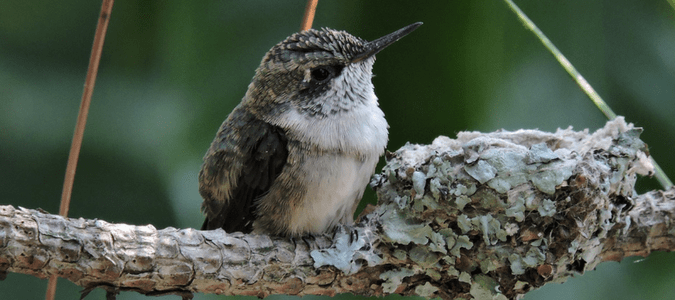
Once you’ve taken time to attract hummingbirds with a feeder, you’ll want to keep them coming back by enticing them to nest in your yard. What can you do to encourage them?
Here’s the good news. If you’ve already done the abovementioned things–investing in hummingbird-friendly plants and getting a feeder or feeders–you are part of the way there because one of the first things these birds tend to look for in a nesting spot is a ready supply of food.
What else can you do?
Get Places To Perch
These can be actual perches that you buy or natural perches on trees and shrubs. Ideally, you want both “scouting” perches that allow hummingbirds to survey the area and “resting” perches that are more hidden and protected.
Install A Water Feature
While it doesn’t have to be a fountain, getting some moving water source for your hummingbirds is essential. Misters tend to work well, for example. Why? Because hummingbirds need water and love to bathe frequently, and stagnant water sources just aren’t as enticing. Be careful, though, to avoid turning your water feature into a mosquito habitat!
Add Splashes Of Red
It’s not a myth. Hummingbirds really are attracted to the color red. It’s why many feeders are red and why the nectar is often colored red. Putting some red accents around your yard can make the place feel homey for hummingbirds.
Offer Shelter
Hummingbirds are tiny. This means their eggs are even tinier. One strong gust of wind and those eggs can be toast. So, invest in greenery with forked “Y” branches and dense foliage that can protect these birds and their nests from wind and rain.
ABC Can Help You Create A Hummingbird-Friendly Yard
Putting together a space attractive to hummingbirds can be a fun challenge, but many people find the project more “challenge” than “fun.” Maybe you can’t keep up with the maintenance. Or perhaps you are following all the advice we already mentioned, but it isn’t working. If this sounds like you, it may be time to call ABC Home & Commercial Services. Our experienced professionals have been helping people all over Texas get what they want from their lawns and landscapes for generations. We know what it takes to turn your yard into an oasis for hummingbirds. Schedule a service today.